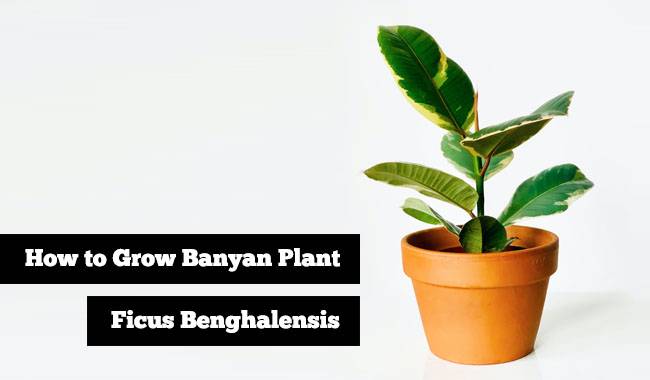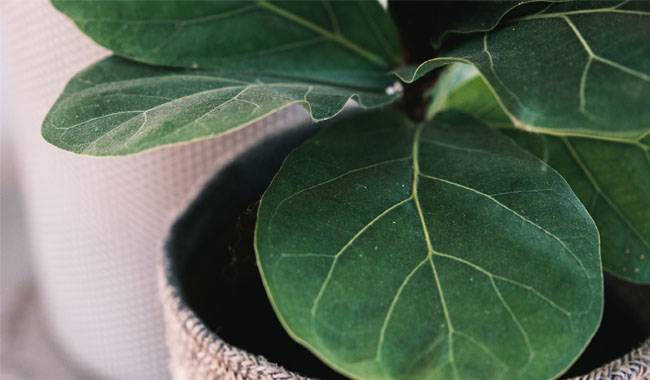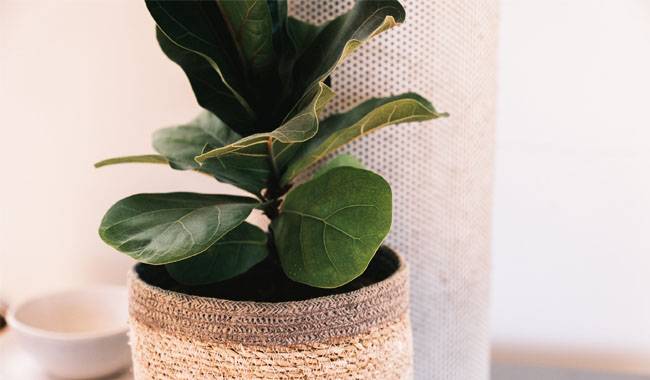
The legendary banyan, also known as Ficus benghalensis, banyan fig, and Indian banyan, can also be grown as a houseplant. In a natural setting, all eyes are drawn to the attractive aerial roots and colonies, but the beauty of the foliage can also be fully appreciated in a room. The Banyan plant is rightly considered one of the most colorful banyan plant species in terms of foliage. Although quite large, this species will have something to surprise you. This includes simple requirements for care and conditions. In the room, Ficus Bengal is constantly growing and transforming. And it is very interesting to observe its changes.
BANYAN PLANT DESCRIPTION
The Banyan Plant (Ficus benghalensis) is one of the best-known members of the genus Ficus in the mulberry family and is a very large and versatile species that can grow up to 0.37 miles (600 m) in diameter. Of course, it grows and transforms with age, but not to enormous proportions. It is better known as Ficus benghalensis, banyan fig, Indian banyan. This plant is sacred in India and belongs to the most valuable species on earth.
Banyan plants arise in nature as a unique asexual community, with its horizontal branches forming many aerial root systems hanging down to form bizarre silhouettes. In nature, aerial roots cascade overshoots, occasionally growing into the soil and rooting to form new complete stems. Aerial roots change their “behavior” in the room.
The epitome of a true Banyan Plant can only be recreated in a bonsai. Because of the dry air, traditional plants often do not form aerial roots at all, and if they do, they rarely dry out before reaching the soil. Only in a sheltered, humid greenhouse environment do they have a chance. The maximum size of an indoor Banyan Plant tree is 10 feet (3 meters) tall (or the size of the ceiling). The branches of this species of Banyan Plant are very reluctant.
The leaves are large and perfectly oval with a very pointed tip. The leaves are 8 inches (20 cm) long and only grow to 4 inches (10 cm) wide. It is darker, fuller, and brighter than Ficus elastica and stands out more because of the beautiful fine, light veins on the underside of the leaves. The density of the cortical leaves is slightly “hidden” behind the shine.
GROWING CONDITIONS FOR INDOOR BANYAN PLANT TREES

Lighting is the key to the beauty and lushness of the Banyan Plant. Incorrect placement is often the culprit for problems with this plant.
Lighting and Placement
Plants should enjoy several hours of direct sunlight each day. Insufficient light will result in a loss of compactness, decoration, and foliage. Midday sun is not welcome, but maximum use should be made of diffused light. The brighter the location, the more resistant the Banyan Plant will be to flooding. In winter, lighting is maximized, and diffusion screens are not necessary. Residual light is only welcome.
This type of Banyan Plant does not like to be circumscribed and will become defoliated with frequent location changes. Mild sudden changes are also not welcome. Banyan plants should be turned regularly, once a week, to allow for even development.
Temperature regime and ventilation
To make Banyan Plant trees feel good in your home, you should not let the temperature fall below 64 °F (18°C) during the active vegetation period.
During rest periods, it is best to lower the temperature slightly to 60-64 °F (16-18°C) to compensate for the lack of light. In hotter conditions, Banyan Plant trees will have to be supplemented by shifting while increasing the humidity of the air.
CARING FOR BANYAN PLANT TREES AT HOME

Heavy but not too frequent watering, unexpected requirements for moist air, and special fertilization – Banyan Plant is not the most difficult species to grow, but it is not too easy either.
Watering and air humidity
Less sensitive to overheating, Banyan Plant trees like to be very rich, adjusted by drying the soil and watering. It is best to drain the water tray after 15-20 minutes and let up to one-third of the substrate dry from above between waterings. Mature shrubs can tolerate complete soil drying if the humidity is not too low and the temperature is moderate. In between watering, you can loosen the soil regularly. In winter, watering is reduced only in the absence of light, allowing the substrate to dry to half its depth.
Banyan Plant is often documented as a species that can be grown in any room, even next to a radiator. But it is not a simpleton, and ignoring its preference for high humidity is the biggest mistake. Low humidity can cause leaves to drop. It is best not to let the reading drop below 50%. For bonsai, air humidity is critical. The species prefers warm shower-water temperatures of about 86 °F (30 °C). Plants respond better to increased humidity by spraying and showering than by installing trays of moist moss or expanded clay.
Feeding and Fertilizer Composition
Fertilization is appropriate only during the peak growth period (if the plant has problems, fertilization should be stopped even in summer.) The standard fertilization dose for Banyan Plant or ornamental foliage should be applied every 2-3 weeks.
Pruning and shaping of Banyan Plant trees
For lush foliage and to encourage side shoots to thrive, it is best to prune before active growth begins in February/March. And do not cut the shoots by pulling them out, but prune them to 5-6 buds (leaves) or even more, leaving at least 2 buds on the shoots. A short pruning produces one replacement shoot. A strong pruning produces two shoots. All known techniques are used in bonsai, including limiting growth with wire. Aerial roots should not be pruned, even if their ornamental qualities are disappointing.
If a Banyan Plant tree grows unevenly, falls on its side, and warps, you had better not delay in tying it to a stand: the later it is placed flat, the less likely it is to repair the warp.
Transplanting, containers, and substrates
Only young plants require the annual replacement of the Banyan Plant. The older the Banyan Plant, the less often it needs to be transplanted. It is best to use the root system that emerges from the drainage holes as a guide. It is best to re-pot in the spring.
For Banyan Plant trees, it is best not to experiment with the shape and proportions of the pots. These Banyan Plants grow better in classic, slightly taller pots with large drainage holes and bonsai – in standard pots.
Suitable soil
The best substrate is soil with a neutral reaction (pH 5.0 to 6.0) for ornamental foliage plants, Banyan plants, and vines. If you mix your soil with equal proportions of turf and leaf soil, you should make it loose in texture with coarse sand, perlite, coconut fibers, or charcoal soil.
It is best to gently transplant a Banyan Plant tree, especially if it is a bonsai. Damaging the root ball usually has disastrous consequences. Neither the main roots nor the aerial roots should be injured during the procedure.
Pests and problems in cultivation
Defoliation, i.e., the tendency to drop leaves in any case with the slightest problem, is often considered a major drawback of Banyan Plant trees. However, leaf loss is usually a sign of a natural process rather than an emergency response. Leaves will naturally renew after 2-3 years. Of course, dry air, temperature fluctuations, and location changes can also cause loss of greenery. But these are not always to blame. Diving into the water soon reveals the trunk from below.
Inattentive watering often leads to root rot (brown spots on leaves at first, then the problem worsens) and to reduced stability. Under unfavorable conditions, spider mites, mealybugs, and scale mites can spread rapidly on Banyan Plant trees. Washing with soapy water, removing insects, and increasing the humidity of the insulation should be supplemented with insecticidal plant infusions (mugwort, yarrow, citrus, garlic, pepper), biological insecticides, or, as a last resort, treatments with conventional insecticides.
Propagation of Banyan Plant trees
In order to obtain new shrubs, you should root the cuttings in a stable, warm environment at a temperature of 68-77 °F (20-25 °C). Only cuttings with 3 to 5 leaves cut in spring or summer should be used. Cuttings should be dried and treated with a growth promoter. The plugs will be buried in sand or a light substrate, with daily ventilation and humidity control.
Shoots can also be rooted in water, but there is a higher probability of decay and loss, and a greenhouse still needs to be installed. Only when the roots have grown to 1-2 inches (2.5-5 cm) in length should the plugs be planted in permanent pots, and subsequent transplanting should be done when the space in the previous container is completely filled with roots.







